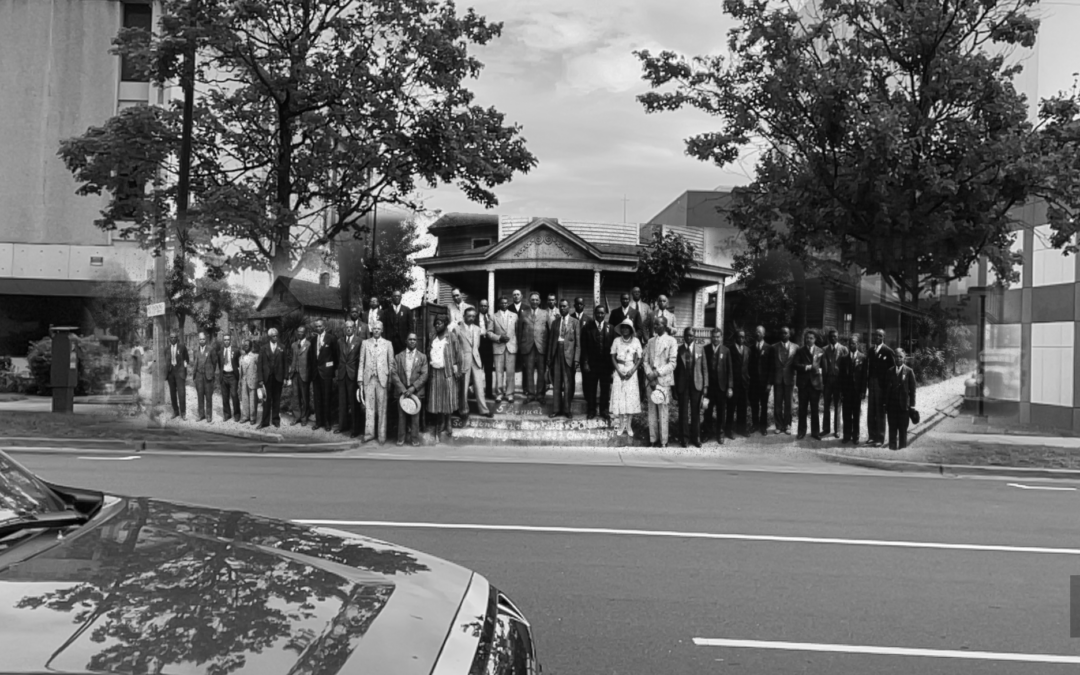Written by Miles Charles
Last Monday, part of the Next Stage team was fortunate enough to take part in a self-guided walking tour of the historic Brooklyn neighborhood, a bustling African American neighborhood once located in what is now uptown Charlotte’s Second Ward area. Chrissy, Haley and I downloaded the Levine Center of the New South’s KnowCLT app which gives the user a text, video and AR-based tour depicting what happened to and what once was Charlotte’s ‘Black Wall Street’. I chose to take part in this tour because as a North Carolinian, but Charlotte foreigner, I was largely unaware of Charlotte’s Black and African American history. Additionally, I wanted to expose myself to downtown Charlotte, while at the same time coming to terms with what was lost, in order to paint a full picture of Charlotte’s “urban renewal”
The KnowCLT walking tour was truly eye-opening. The app’s information and the stories it tells are illuminating and stirring. The walking tour allowed me to gain an understanding of how geographically central the Brooklyn neighborhood was and how successful Black Americans became during a politically racist period. Yet at the same time, I learned how quickly generations of hard work and Black success were wiped away by the policy of “urban renewal”.
As a Charlotte newcomer, other than hours spent in Charlotte traffic while traveling, the walking tour was my first interaction with uptown Charlotte and the Brooklyn neighborhood. What surprised us was that Chrissy, a long-time Charlotte resident, had quite a similar experience. “It surprises me that despite living in Charlotte since 1984, I’ve never heard anyone talk about or reference Brooklyn.” Haley articulated all of our thoughts when she noted, “I was particularly struck by the size of the original neighborhood – in my mind, it was only a couple of blocks, but walking it I quickly realized how expansive and established it had been. Reading about the neighborhood and events from afar couldn’t compare with actually standing on the Brooklyn sidewalks or looking at the spaces where a high school, funeral home or church used to be.”
Reflecting on the hidden narrative that is Brooklyn, Chrissy wondered “how Charlotte would be different today if Brooklyn had remained and how much less work would need to be done.” Standing in the center of Charlotte, where the Mecklenburg Investment Company once stood and reflecting on very similar thoughts, I narrowed in on the idea of generational wealth. When Charlotte destroyed Brooklyn’s 216 businesses, 13 churches, 2 schools and 1,480 homes, the City stole hundreds of millions of dollars from over 7,000 displaced Black Charlotteans. And this counts only the land value, not the value of lost income, businesses, houses and more. Reflecting on these losses made Charlotte’s low social mobility ranking become a lot more clear. Black success and wealth in Charlotte was set back generations by “urban renewal” and continues to be impacted by gentrification in areas across the city. This leaves us with a question posed by Chrissy – “As Charlotte continues to flourish, how are we applying what we’ve learned from Brooklyn to inform how we move forward?”
